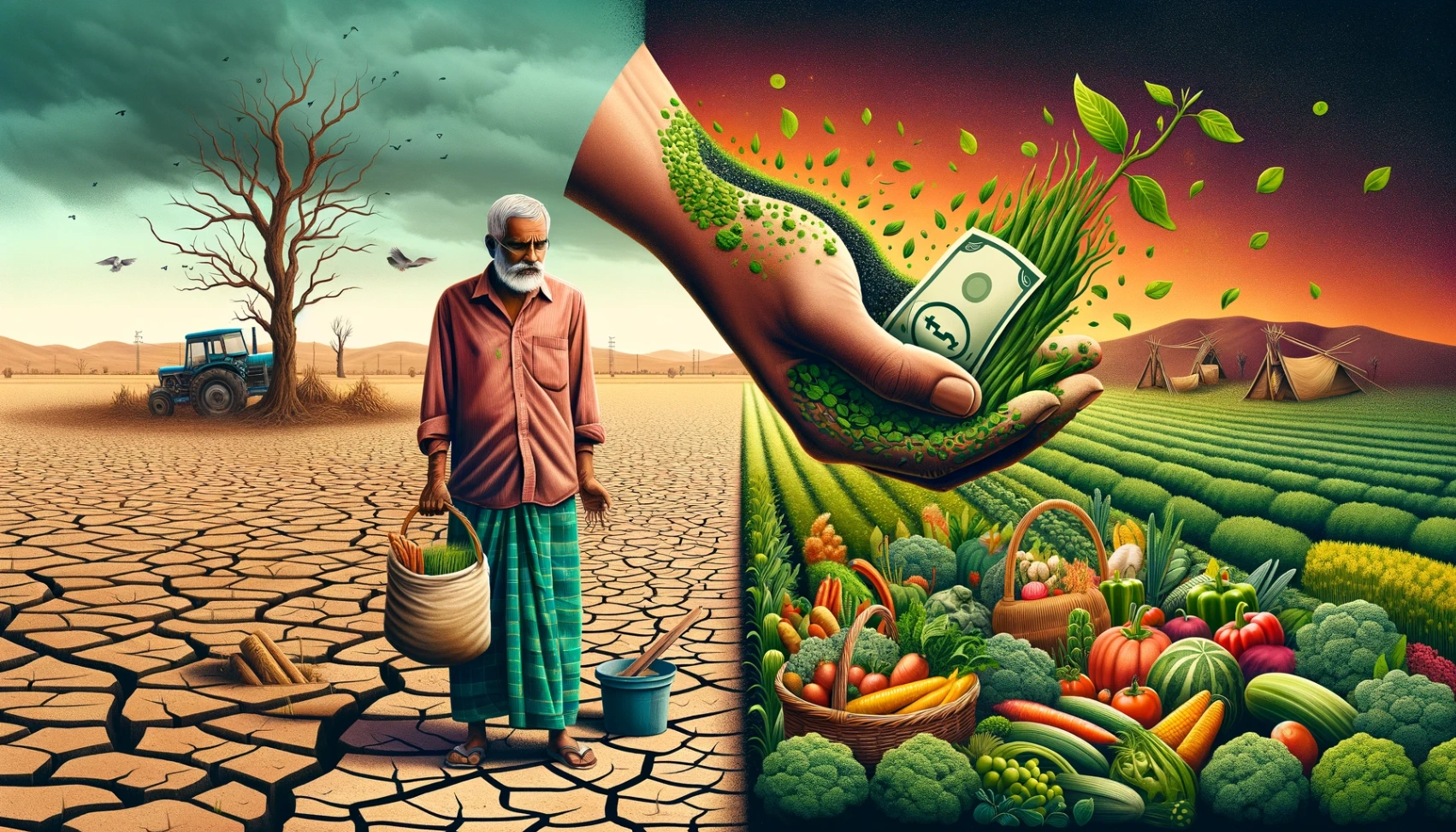Agriculture's "Agriculture Loan Subsidy" serves as a crucial lifeline, supporting farmers and promoting agricultural growth.
This article will explore what it is, how it works, and the significant benefits it provides to those who cultivate the land. Join us as we uncover the essentials of this vital aspect of modern farming.
Understanding Agriculture Loan Subsidy
An agriculture loan subsidy is a financial program where the government or other entities help reduce the cost of loans for farmers.
It involves covering a portion of the loan's interest or principal, making it more affordable for farmers to access credit for their farming needs, such as buying land or equipment.
This subsidy supports agricultural development by easing financial burdens and increasing farmers' access to funds.
The purposes of providing subsidies in agriculture loans are to:
- Affordability: Make loans cheaper, encouraging investment.
- Financial Inclusion: Help small farmers access credit.
- Risk Mitigation: Reduce financial risks in farming.
- Agricultural Development: Foster modernization and productivity.
- Food Security: Ensure a stable food supply.
- Rural Economic Growth: Boost rural economies.
- Environmental Sustainability: Encourage eco-friendly practices.
How Agriculture Loan Subsidy Works
Eligibility criteria for farmers to avail of loan subsidies typically include:
- Farm Size: Farmers must own or cultivate land within specified size limits, which may vary by region and program.
- Agricultural Activity: They should engage in recognized agrarian activities, such as crop cultivation, livestock rearing, or agribusiness.
- Credit History: A good credit history or repayment record with financial institutions is often required.
- Citizenship or Residency: Some subsidies may be limited to citizens or residents of the country.
- Farm Ownership: Ownership or leasehold rights of the land may be necessary, depending on the subsidy program.
- Financial Need: Demonstrating a genuine need for the subsidy, especially for low-income or marginalized farmers.
- Compliance with Regulations: Compliance with environmental, agricultural, and land use regulations may be mandatory.
- Purpose of Loan: Farmers may need to specify the purpose of the loan, ensuring it aligns with the goals of the subsidy program.
- Documentation: Providing necessary documentation, such as land titles, identification, and financial records, is typically required.
- Application Process: Following the prescribed application process and deadlines is essential to qualify.
Eligibility criteria for loan subsidies vary by program and region, so farmers should consult local authorities or financial institutions for precise guidelines.
Application Process for Obtaining A Subsidized Agriculture Loan
Here's a brief overview of the application process for agricultural loan subsidies:
- Inquiry: Farmers begin by contacting relevant government agencies or financial institutions about available subsidy programs.
- Documentation: They gather necessary documents, such as land records, financial statements, and identification.
- Submission: Complete and submit the application form and the required documents to the designated authorities.
- Review: The authorities assess the applications to ensure eligibility and compliance with program requirements.
- Approval: Once approved, farmers receive notification and instructions on how to proceed with the subsidized loan.
- Loan Disbursement: Funds are disbursed, and farmers can utilize them for their approved agricultural purposes.
- Repayment: Farmers must adhere to the repayment schedule and fulfill any program-specific conditions during the loan period.
- Monitoring: Some programs may involve periodic monitoring to ensure compliance with subsidy terms.
- Feedback: Farmers may provide feedback or reports on the use of funds and the impact on their agricultural activities.
- Closure: After successful repayment and compliance, the subsidy process is concluded.
Remember that the specific steps and requirements may vary depending on the subsidy program and local regulations.
The Role of Government Policies and Programs
Government policies and programs are essential for effectively implementing agricultural loan subsidies. They ensure farmers receive the necessary support. Here's their key role:
- Design and Regulation: Governments set subsidy program rules, including eligibility, rates, and procedures.
- Funding Allocation: They allocate budgets to fund subsidy programs.
- Promotion and Awareness: Governments promote programs to reach more farmers.
- Monitoring and Evaluation: They assess subsidy progress and its impact.
- Policy Adjustments: Policies may change based on needs and feedback.
- Coordination: Governments work with institutions for efficient subsidy distribution.
- Ensuring Equity: Policies aim for fair access to subsidies.
- Compliance and Enforcement: Governments enforce program rules.
- Periodic Review: Programs undergo regular reviews.
- Long-Term Impact: Policies aim for sustainable agricultural growth.
Benefits of Agriculture Loan Subsidy
Agriculture loan subsidies offer a range of significant benefits to farmers, contributing to their financial well-being and the overall development of the agricultural sector. Here are the key advantages:
- Financial Relief: Subsidies reduce the borrowing cost, lightening farmers' financial burden.
- Enhanced Access to Credit: They improve access to credit for farmers, especially those in underserved or rural areas.
- Support for Agricultural Development: Subsidies foster modernization and innovation in farming practices.
- Risk Mitigation: They help farmers manage financial risks associated with unpredictable factors like weather and market fluctuations.
- Increased Productivity: Subsidized loans enable farmers to invest in better equipment and techniques, leading to higher yields.
- Job Creation: Agricultural growth through subsidies creates jobs in rural communities.
- Food Security: Subsidies ensure a consistent food supply by boosting agricultural production.
- Economic Growth: They stimulate economic development, particularly in agricultural economies.
- Environmental Sustainability: Some subsidies promote eco-friendly farming practices, benefiting the environment.
- Inclusive Growth: They support the growth of smallholder and marginalized farmers, promoting inclusivity in agriculture.
These benefits underscore the vital role of agriculture loan subsidies in fostering a robust and sustainable agricultural sector.
Challenges and Considerations
While agriculture loan subsidies offer numerous advantages, they also have specific challenges and considerations that must be addressed. Here are some key factors to keep in mind:
- Misuse and Fraud: Subsidies may be susceptible to misuse or fraudulent claims, necessitating vital monitoring and enforcement measures.
- Budget Constraints: Adequate budget allocation is essential for sustaining subsidy programs, which can strain government budgets.
- Administrative Complexity: Managing subsidy programs can be administratively complex, requiring efficient systems and processes.
- Market Distortions: Subsidies can distort market dynamics, potentially affecting prices and competition within the agriculture sector.
- Sustainability: Ensuring the long-term sustainability of subsidy programs is crucial to continue supporting farmers effectively.
- Targeting Effectiveness: It's essential to ensure subsidies reach their intended beneficiaries, mainly more minor and marginalized farmers.
- Over-Reliance: Farmers may become overly dependent on subsidies, impacting their long-term financial stability and self-sufficiency.
The Bottomline
In summary, agriculture loan subsidies are a critical support system for farmers and the agricultural sector, reducing financial burdens, improving access to credit, and promoting sustainability.
These subsidies contribute to increased productivity, rural development, and food security. They remain essential for farming communities and our food supply as they evolve and expand.






